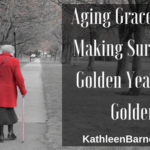Vitamin D is a miracle nutrient. I can say that without any hesitation.
A century ago, I might have been accused of peddling snake oil when we say that keeping your vitamin D levels optimal can:
- Prevent at least 16 kinds of cancer
- Protect your brain from Alzheimer’s and other forms of dementia
- Protect your heart and lower blood pressure
- Keep blood sugars steady and prevent diabetes
- Alleviate depression
- Prevent obesity
- Keep bones and joints strong
- Prevent kidney disease
- Improve digestive health
- Relieve menopausal symptoms
- Prevent autoimmune diseases
- Lengthen your life span
See what I mean? You might think these widely varying conditions couldn’t possibly be related to a deficiency of one little vitamin. But there is good, solid medical science to prove the widespread health value of optimal vitamin D levels.
First, it’s important to know that vitamin D is actually a hormone, a chemical messenger to virtually every cell in the human body. That’s why it is so important to so many body processes.
Low vitamin D levels are epidemic
We all need vitamin D and lots of it. We need much more than most of us get.
Boston University professor of medicine Michael Holick, M.D., Ph.D., is at the forefront of vitamin D research. In Dr. Holick’s opinion, more than half of all North Americans are deficient in vitamin D in the winter and the majority of us are deficient year-round.
Why in winter? Because vitamin D is synthesized through the skin from the ultraviolet radiation (UVB rays) produced by natural sunlight.
That’s right: Just the rays of the sun can give your body all the fuel we need to produce vitamin D. For obvious reasons, most of us don’t get enough sun exposure in the winter because we’re bundled up against the cold and little of our skin is exposed to the much weakened sun’s rays. What’s more, the farther we live from the equator, the weaker the sun’s rays and the lower our vitamin D production.
If you’re lucky enough to live in Florida or California or other warm, climates, you have available to you the sunlight necessary for your body to produce the vitamin D you need for a host of scientifically validated health benefits, including an overall longer life expectancy.
Dr. Holick says that those who live north of Atlanta are at highest risk of D deficiency. But he notes, even those who live in tropical climates are often deficient in vitamin D because they don’t spend much time outdoors.
Sunscreen is a health risk
In addition, when we do spend time in the sun, we’ve been conditioned to wear sunscreen for fear of getting skin cancer. While those cautions are valid, skin cancer risk is not a factor for the small amount of time we need to be in the sun to spark vitamin D production.
The National Academy of Sciences now says that those of us who regularly and properly practice skin protection may be at risk for vitamin D deficiency.
Most of us need exposure of arms, face and legs for 20 minutes to strong sunlight three times a week to build up our vitamin D stores. Even very fair-skinned people will not burn in that amount of time.
Darker skinned people may actually need much longer exposure in most North American climates, perhaps 20 to 30 times as much, which translates to an unrealistic several hours a day if you live in a sun-challenged latitude like Toronto.
Even sunscreens at the lowest levels like SPF 8 block UV rays necessary to produce vitamin D. If you want to spend a day in the sun and you’re worried about burning, bring along your sunscreen and only apply it after you’ve taken your vitamin D sunbath.
Powerful vitamin D research
Dr. Joseph Mercola, a leading natural health advocate, estimates that vitamin D deficiency is the cause of more than 1 million deaths worldwide each year, including 150,000 cancer deaths in the U.S. alone. That’s a shocking figure considering that the solution is so simple and that sunlight is free.
Here’s a synopsis of some of the most powerful research on vitamin D deficiency:
- People with low vitamin D blood levels were 40% more likely to die of heart disease and more than double the risk of dying of any cause over an eight-year period as those with normal D levels.
- For cancer alone, there are more than 800 studies confirming D’s effectiveness in treatment and prevention.
- Vitamin D deficiency doubles the risk of Alzheimer’s.
- People with low D levels had a higher risk of clinical depression.
- Obesity impairs the ability to use vitamin D in the body, so obese people need twice as much vitamin D as others.
- Type 2 diabetes is aggravated by D deficiency.
- Schizophrenia has been strongly linked to D deficiency.
- Vitamin D is considered a standard treatment for psoriasis.
- 80% of nursing home patients are vitamin D deficient.
- 60% of all hospital patients are D deficient.
- Seasonal Affective Disorder (SAD) is caused by a melatonin imbalance resulting from inadequate exposure to sunlight.
- The risk of developing diabetes and cancer is reduced as much as 80% with unprotected exposure to sunlight two to three times weekly. Hormonally related cancers (prostate, breast, ovarian) are particularly linked to vitamin D levels.
- In people with lymphoma and colon cancer, people with low vitamin D levels were twice as likely to die as those who had normal D levels.
If that isn’t enough to send your running to pick up some vitamin D3 supplements, I don’t know what will.
How to get Vitamin D
This is a simple one: Few foods contain any significant amount of vitamin D, so forget the idea of getting your vitamin D needs from food.
You’ll find small amounts of vitamin D in egg yolks, beef liver and cheese. You can get a fairly respectable amount of D from cod liver oil (yuck) and cooked salmon, mackerel. Many other foods are vitamin D fortified, including milk, some fruit juices and cereals.
You’d need to drink ten glasses of vitamin D enriched milk a day just to get the minimal vitamin D requirements. Many experts suggest our real need for vitamin D is tens of times greater that the RDA of 600 IU a day for adults, and 800 IU daily for those over 70.
The National Academy of Sciences Institute of Medicine now recommends a daily dose of 1000 IU of vitamin D for those at risk for vitamin D insufficiency which is most of us. (emphasis mine).
Dr. Holick recommends 10 times that amount or more for those who are at risk.
Supplements are simple and inexpensive. Be sure you’re getting vitamin D3—cholecalciferol.
If you are dark skinned and particularly if you are African-American, there is little chance that you are getting adequate D intake. You need hours of sun exposure daily to produce the vitamin D you need to be healthy. This is a likely cause of the epidemic of certain types of cancer in African-Americans, particularly prostate cancer in black men.
For these reasons, vitamin D supplementation is highly recommended for dark-skinned people.
How much is safe?
The Institute of Medicine sets a safe upper limit on vitamin D supplementation at 2,000 IU of vitamin D3 (cholecalciferol) a day.
However, a fair skinned person can make about five times that amount or 10,000 IU in just 20 minutes sitting on the beach. (Dark-skinned people take longer to make the same amount). In an average beach session, many people take in 30,000 or 40,00 IU with no harmful effects. There have never been any reports of vitamin D toxicity.
As long as you monitor your levels and keep them between 50 and 70, experts say take as much vitamin D as you need to get there and stay there.
Vitamin D deficiency cannot be reversed overnight, so you’ll probably need to take supplements for several months to get your blood levels back up to where they should be. When you get to the optimal level, you’ll need to keep taking vitamin D since few of us get adequate exposure.
Exceptions: If you work outside year around, you are probably one of the few humans who get enough sunlight to manufacture the D you need. Your blood test will confirm that.
Why hasn’t the word been spread?
Perhaps I sound a little cynical, but since sunlight can’t be patented, the drug companies aren’t interested either in letting folks know there is a free source of enormous health benefits or in encouraging them to get more sunshine in order to avoid buying expensive and potentially harmful pharmaceuticals.
Simple solutions are often slow to catch on and despite the growing body of research that confirms the immense value of vitamin D, most doctors are not up to date on the current research.
It’s even more rare for a doctor to order a test for vitamin D levels in the blood – one that could save your life.
That’s why patients need to become more proactive. Ask your doctor for a test of blood vitamin D levels.
Optimal blood levels of 25-hydroxyvitamin D are 50 to 70 ng/ml (this is the major indicator). The average adult needs to take 4,000 to 8,000 IU of vitamin D from all sources in order to achieve these blood levels, although some people may need to take as much as 20,000 IU to achieve the optimal level.
All of the boils down to one simple idea: Vitamin D supplements may literally save your life. Take them faithfully and, combined with a healthy lifestyle, you live happier, healthier and longer.
This introduction is based on my forthcoming book, Let the Sun Shine In: The Miracle of Vitamin D.
The following information was originally posted to this blog in December of 2008.
Vitamin D and the sun
At this time of the year, respected researchers like Michael Holick, Ph.D. of Boston University say that 95% of us are vitamin D deficient.
That’s because our exposure to natural sunlight is so much less at this time of the year for obvious reasons that it’s impractical to walk around with face arms and legs exposed for 15 minutes when it’s 10 degrees Fahrenheit outside.
Now the American Dermatological Association comes up with the brilliant notion that we shouldn’t get our vitamin D from sunlight because it’s too likely to cause skin cancer.
This is part of a decades-long campaign conducted by dermatologists to hammer it into our heads that excessive sun exposure is hazardous to your health. I couldn’t agree more.
But you only need 15 minutes of direct sunlight three times a week to get your vitamin D from the sun.
At the median latitude in the United States (think of a line roughly from Washington to San Francisco), this is all you need. If you live south of the line, reduce your exposure by three to five minutes. If you live north of that line, add on three to five minutes. If you live in Alaska, you can probably safely tolerate as much as 30 minutes.
Take a look at my photo. I have very fair Celtic skin. I’m about as pale as humans come. I burn very easily, but I do not burn spending 15 minutes in direct sunlight three times a week.
The dermatologists need to stop panicking and look at the bigger picture. The health benefits of sufficient vitamin D intake are enormous.
Almost all of us need more of it.
Sunlight is simple. It’s free. And it’s vitally important to your health.
The human body can store enough vitamin D to last about three months, so about this time of year, we start feeling the deficiency. If you’re not into winter solstice sunbathing, a supplement will be fine to get you through the cold months.
Updated: 6/23/2017







